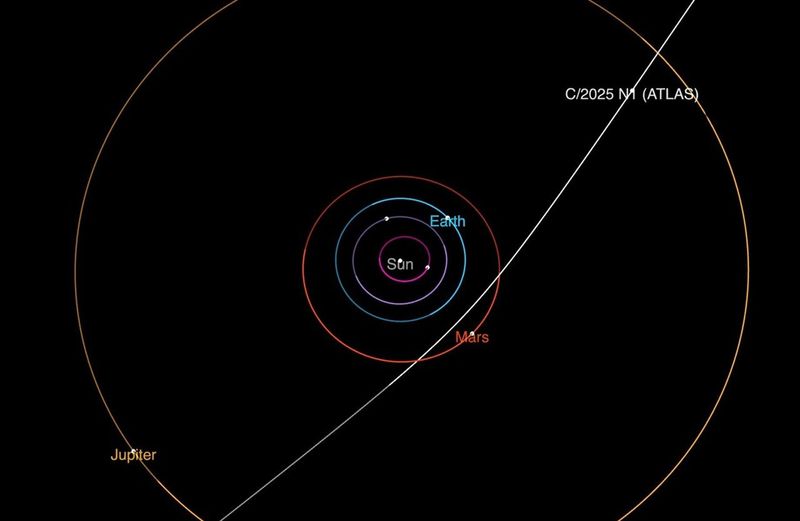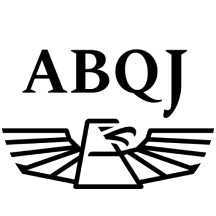
One thing about 3I/ATLAS is for certain: It's definitely not from Earth's solar system.
But what exactly is the intriguing interstellar object discovered speeding through our cosmic neighborhood? Most astrophysicists widely agree 3I/ATLAS displays all the telltale signs of an icy comet.
Now, a trio of researchers led by Avi Loeb, a controversial astrophysicist from Harvard University, are positing a very different theory: What if 3I/ATLAS isn't just some random space rock that arrived in our solar system by happenstance but an intelligently controlled alien spacecraft?
Even the authors of the research paper positing the wild idea aren't fully sold on it, but – hey – extraterrestrial visitors are always fun to think about.
What is 3I/ATLAS?
A likely comet known as 3I/ATLAS made news earlier in July when it was confirmed to have originated outside Earth's solar system, which makes it just one of three known interstellar objects ever discovered in our cosmic neighborhood.
What's more, the object, which scientists estimate to be more than 12 miles wide, is whizzing at 37 miles per second relative to the sun on a trajectory that on Oct. 30 will bring it within about 130 million miles of Earth, according to NASA.
A telescope in Chile – part of the NASA-funded Asteroid Terrestrial-impact Last Alert System, or ATLAS – was the first to spot what initially looked like an unknown asteroid on a path approaching Earth’s orbit.
The observation was reported to the Minor Planet Center, the official authority for observing and reporting new asteroids, comets and other small bodies in the solar system. The object, eventually confirmed to almost certainly be a comet and named 3I/ATLAS, was later confirmed to have interstellar origins after follow-up observations.
Harvard astrophysicist Avi Loeb suggests 3I/ATLAS is alien tech
But is 3I/ATLAS definitely an icy comet?
The three researchers, who most prominently include Loeb, recently published a paper speculating about whether the object could be "hostile" alien technology.
Loeb is famed for encouraging astrophysicists to have an open mind about extraterrestrials, but his theories and research often rankle other scientists in the field, who push back on some of his bolder claims. He is cofounder of the Galileo Project, a research program at the Harvard-Smithsonian Center for Astrophysics dedicated to the search for extraterrestrials.
The paper Loeb cowrote, uploaded July 16 to the preprint server arXiv, is more a "pedagogical exercise" examining the unusual trajectory of 3I/ATLAS and how fast it is traveling through space than a study meant to offer definitive conclusions. The paper has not been peer-reviewed, it's important to note.
Loeb further explained the paper in a post on the online publishing platform Medium, writing that it was simply an "interesting exercise in its own right, and is fun to explore."
"This hypothesis proposes that our cosmic neighborhood is dangerous, filled with intelligent civilizations that are hostile and silent to avoid detection by potential predators," Loeb wrote.
But experts who spoke to science news website LiveScience cast serious doubt on Loeb's sensational theory.
"Any suggestion that it's artificial is nonsense on stilts, and is an insult to the exciting work going on to understand this object," Chris Lintott, an astronomer at the University of Oxford who was part of the team that simulated 3I/ATLAS's galactic origins, told Live Science.
Even Loeb concedes it's unlikely 3I/ATLAS is alien technology.
"By far, the most likely outcome will be that 3I/ATLAS is a completely natural interstellar object, probably a comet," he wrote in the blog post.
Loeb has claimed metallic spheres were extraterrestrial
This is far from the first time Loeb had theorized that an object in our solar system could be not only interstellar but an extraterrestrial artifact.
Loeb made headlines in August 2023 when he claimed that remnants of a meteor he and a team recovered in the Pacific Ocean were interstellar in origin.
An unusual meteorite Loeb and his team named IM1 had crashed into Earth's atmosphere in 2014. The researchers then retrieved suspected remnants of the meteor in June 2023 off the coast of Papua New Guinea.
By August, Loeb announced that early analysis suggested the metallic spherules were composed of substance unmatched to any existing alloys in our solar system – though other astrophysicists were unconvinced.
At the time, Loeb did not yet have an answer to whether the metallic spheres were artificial or natural in origin.
Loeb also theorized comet Oumuamua was alien spaceship
In 2017, the comet Oumuamua, Hawaiian for “scout” or “messenger,” became the first interstellar object ever detected in the solar system, puzzling scientists with its strange shape and trajectory.
But Loeb posited that the comet − as long as a football field and thin like a cigar − was able to accelerate as it approached the sun by harnessing its solar power as a "light sail," not unlike how a ship's sail catches the wind. Because no natural phenomenon would be capable of such space travel, Loeb was essentially suggesting Oumuamua could have been an alien spaceship.
A study in March 2023 explained the comet's odd orbit as a simple physical mechanism thought to be common among many icy comets: outgassing of hydrogen as the comet warmed in the sunlight.
The only other time an interstellar object has been spotted traveling through our solar system occurred in 2019, when comet Borisov passed by.
Contributing: Mary Walrath-Holdridge
Eric Lagatta is the Space Connect reporter for the USA TODAY Network. Reach him at elagatta@gannett.com
This article originally appeared on USA TODAY: Could comet 3I/ATLAS be alien technology? Controversial Harvard astrophysicist says yes
Reporting by Eric Lagatta, USA TODAY / USA TODAY
USA TODAY Network via Reuters Connect

 USA TODAY National
USA TODAY National
 KRDO NewsChannel 13
KRDO NewsChannel 13 CBS Boston
CBS Boston Albuquerque Journal
Albuquerque Journal CNN
CNN The US Sun Technology
The US Sun Technology WMBD-Radio
WMBD-Radio Raw Story
Raw Story Associated Press US News
Associated Press US News AlterNet
AlterNet The List
The List America News
America News The Daily Bonnet
The Daily Bonnet